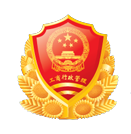"12th Five-Year" opportunities and challenges for Chinas refractory industry
The 12th Five-Year Plan is a critical period for building a well-off society in an all-round way in China. It is also a critical period for deepening reform and opening up and speeding up the transformation of economic development mode. The development of refractory industry in China is facing both rare historical opportunities and many risks and challenges.
International situation: from the global situation, the international environment is generally beneficial to China's industrial development. But compared with the past ten years, the international environment of China's industrial development will gradually tighten. First, the global economy may enter a period of low-speed growth, in the post-financial crisis period, the world economy will be in a certain period of low-speed growth. Secondly, the global supply and demand structure will change significantly. Now some major economic countries are planning deep economic restructuring, seeking to Re-industrialize with advanced manufacturing as the core, hoping to revitalize the manufacturing industry and expand exports. Emerging economies and developing countries are also accelerating the development of industries and technologies with their own comparative advantages. China's traditional superior industries will face more intense international competition. Thirdly, the international trade environment is not optimistic, the financial crisis has aggravated trade protection, trade protectionism is becoming increasingly strong, trade frictions have increased significantly, the world trade environment is becoming increasingly complex, the total volume of international trade will show a downward trend.
Domestic Situation: With the implementation of the proactive fiscal policy and the prudent monetary policy, the risks and challenges faced by China's refractory industry are also obvious. First, the investment in super-conventional fixed assets, mainly in large-scale infrastructure construction, has been transferred to a downward deceleration channel, and the domestic economic growth rate will be reduced. A sharp drop in the overall growth rate of fixed asset investment will reduce demand for steel, cement, glass and other industries, and will inevitably have an impact on the refractory market. Second, the monetary policy from moderately loose to stable, the price of raw materials may continue to rise, the cost of production factors in the real economy will gradually increase, the profit margin of the industry production and operation will also be squeezed. Three, resources and environment constraints will further tighten. With the government's efforts to strengthen the management of resources, energy and environment, the restriction on refractory industry production is becoming increasingly obvious, the whole industry energy saving and consumption reduction, pollution control and emission reduction task is very heavy. The shortage of some refractory raw material resources is also difficult to alleviate in the short term.
Industry situation: Looking from our country refractory industry itself, although has made the considerable progress in recent years, but the current situation of the whole industry and the national economy, especially the development of high temperature industry, there are still many inappropriate places, and there is a certain gap with developed countries. In addition to the aforementioned problems, such as excess total volume, low industrial concentration and low resource utilization, we should recognize that as a big country of refractory production and consumption in the world, although the production capacity of refractory products is very large, the variety of high-tech products is small, and the proportion of "green new" refractory products is biased. Low; in the face of potential international market, high-grade, high-tech content, high value-added products are not many; the proportion of ordinary products is high, the proportion of unshaped refractory products is low. In addition, the overall level of scientific and technological innovation and cleaner production in China's refractory industry is also lower than the international advanced level.
The main tasks in the future are: opportunities and challenges coexist in China's refractory industry during the 12th Five-Year Plan period. We must recognize the situation clearly, strengthen our confidence, firmly establish the overall awareness, international vision and strategic thinking, and, under the guidance of the scientific concept of development, speed up the transformation of the mode of development as the main line, study new ideas, formulate new measures, create a new situation, seize and make good use of the important strategic opportunity period, so as to ensure the sustainable and healthy development of the industry. On the basis of structural upgrading, product optimization, energy conservation and environmental protection, and improvement of comprehensive strength, we should promote transformation in development and seek development in transformation.
During the Twelfth Five-Year Plan period, China's refractory industry focused on the Twelfth Five-Year Plan for National Economic and Social Development, aiming at promoting the sustained and healthy development of China's refractory industry, and strived to achieve five significant improvements: the overall development quality of the industry was significantly improved; the capability of independent innovation was significantly improved; and technical equipment was significantly improved. The level has been markedly improved; the comprehensive utilization of resources has been markedly improved; the effectiveness of energy conservation and emission reduction has been significantly improved.





















